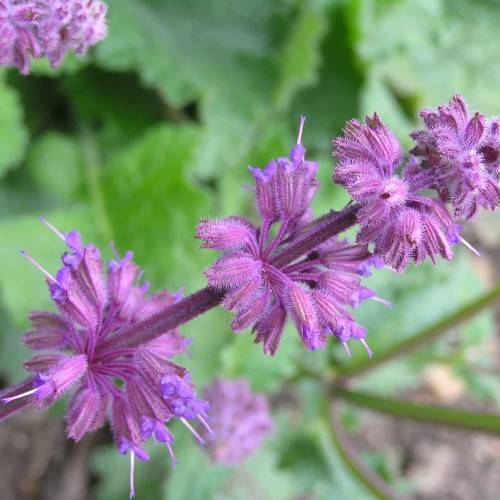
lilac sage
Salvia verticillata
Cycle:
Herbaceous Perennial
Watering:
Minimum
Hardiness Zone:
5 - 8
Flowers:
Flowers
Sun:
Full sun
Leaf:
Yes
Growth Rate:
Low
Maintenance:
Low
Drought Tolerant:
Yes
Salt Tolerant:
Yes
Care Level:
Medium
watering
Lilac sage (Salvia verticillata) is an evergreen shrub and should be watered deeply and infrequently. Watering once every 7-10 days should be sufficient for most climates. When watering, it is important to ensure that the entire root zone and soil around the plant is thoroughly saturated with water. During very hot, dry weather, water twice a week. Allow the soil to dry out slightly between waterings and take care to avoid waterlogging or overwatering.
sunlight
Lilac sage (Salvia verticillata) ideally requires 6-8 hours of full sun per day for optimal growth and flowering. The best sunlight is provided in the morning or late afternoon when the sun is not at its peak intensity. When starting the plants indoors, it’s essential to provide as much natural light as possible or a few hours of artificial light. In general, plants prefer indirect sunlight for the majority of the day, though a few hours of direct sun should be provided as well. Planting the Lilac Sage outside provides additional benefits such as protection from wind and exposure to natural rainfall.
pruning
Lilac sage (Salvia verticillata) should be pruned in late winter, after danger of frost is past. Prune the plant by removing dead flower stalks and any stems that are broken or dead. Cut the remaining stems back by 1-third to 1-half their height. Regularly prune off any flowers as soon as they start to fade to promote reblooming. In late summer, once flowering has stopped, cut any leggy, out-of-shape stems back hard, within an inch or 2 of the base.
